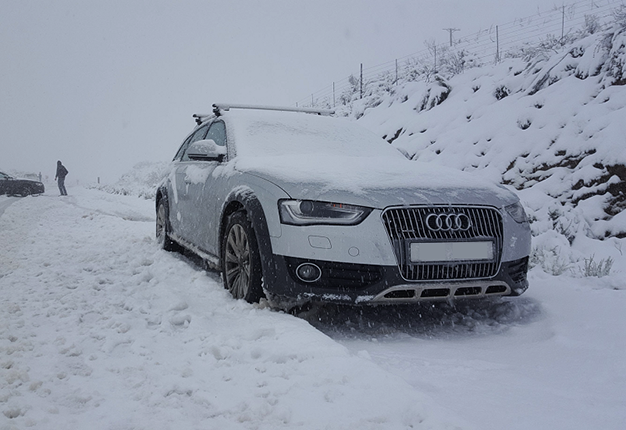Although skiing doesn’t register as a local pastime, the reality is that South Africa does receive a fair amount of snowfall during winter.
Most SA motorists will likely never encounter snow but there are high-altitude mountain passes in the country which can be completely blanketed in during the depths of winter.
Braving the icy cold
With the country's snowfall season coinciding with the mid-year school and tertiary education vacation months, the possibility of traveling with your family and encountering snow conditions increases, especially in the Western Cape and roads bordering Lesotho.
Unlike Northern Hemisphere countries, which have specific legislation regulating the use of vehicles on snowy roads, SA drivers are guided by their own intuition and discipline.
And therein lies the danger. In countries which experience severe winter conditions, drivers are required to switch to snow tyres, with an appropriate compound and spikes, to improve traction and retain steering function.
During especially heavy snow conditions, when attempting to drive up steep roads, police mandate that snow chains are fitted as an additional upgrade – as anyone who has driving in the Alps during winter can attest to.
Image: Wheels24
In SA things are very different. You drive up mountain roads in snowy conditions on summer tyres. Preventing that from becoming a potentially costly disaster, are some fundamentals worth remembering.
Be consistent and committed
Most modern vehicles sold in SA come equipped with a traction control system of some kind. These driver assistance systems are cleverly calibrated but work best when throttle and steering inputs are constant.
If you encounter a slippery snow surface, don’t panic and start wildly varying throttle inputs, from backing-off when losing traction to attempting full-power; all you’ll end up doing is confusing the traction control system attempting to help you. Pick a safe, slow, speed and be disciplined with your right foot.
Be clear
If things go wrong on a snowy road surface, you’ll have very little ability to stop – especially going downhill. Before attempting any mountain pass descent, ensure there are no other vehicles clogging up corners or possible collision-avoidance areas. A clear road down will give you a margin of recovery if things do go awry.
Torque is your friend
Although contemporary automatic transmissions are sufficiently sophisticated to realise when surface conditions are slippery, readjusting their algorithms and shift-points accordingly, driving a manual transmission in snow means you are in control.
As is the case with driving 4x4s in extreme off-road conditions: go as slow as possible, and only as fast as necessary. Use all the available low-down engine torque to shift-up at the earliest possible moment, thereby eliminating the possibility for peak power spikes and throttle induced wheelspin.
Lift-off
If you are descending a snowy mountain pass, corners require specific care as you are expecting the tyres to both roll the car along and turn it, increasing the traction burden on them.
An excellent method of getting the front-tyres to ‘bite’ a bit on turn-in and prevent terminal understeer, is to lift-off the throttle as you enter the corner. This input should transfer weight momentarily onto the front-axle, increasing traction and enabling you to turn.
Brakes are bad
If you are in an older model car, without the benefit of ABS, snow driving can be hugely challenging. Once wheels lock you are merely a passenger holding the steering wheel, unable to input any turning control.
Your best option, especially if you are in a diesel-powered vehicle (most likely, a bakkie) is to allow engine-braking to do all your deceleration. Keep your vehicle in first-gear, even if it means going agonisingly slow, and let the diesel engine’s high compression ratio limit your speed with combustion.
